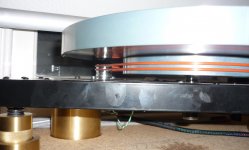I can assure you the springs do very nearly nothing compared with suspected advanges. If you analyse carefully they are almost ridged at the levels that would really matter. Like a racing car almost. That is enough to do something but not as much as would be ideal. As you say, if they decouple they also gyrate. Gyrate is a total disaster. The LP12 avoids this by having the offset spring and centre of gravity about 2 inches towards the arm. Effectively the springs almost do nothing. They do enough. A little of what they do is average out belt tention. As the LP12 belt is nicely made this is not really true of LP12.
Falling weight would be good. Early 78's seem to have rumble about at -20 dB. Falling weight drives were tried I am told. One idea I had was a continuous water turbine using a header tank .
Falling weight would be good. Early 78's seem to have rumble about at -20 dB. Falling weight drives were tried I am told. One idea I had was a continuous water turbine using a header tank .
By suspended platform I mean something like a Vibraplane, active isolation.
Very good device, Simon ... but pricey! There's also the 'MinusK' which I believe is comparable.
Regards,
Andy
You should get a spectrum analyser. Nothing fancy. A 70 dB dynamic range. You will find much of what is said is pure imagination and very frustrating. On the Garrard 501 we use simple squash balls instead of springs. They have similar decoupling to the Linn springs and more suited to high mass. Remember RIAA makes the problem worse by 20 db @ 20 Hz. You need to measure the reality of what you think. It will shock you. How soumething of 1888 can work so well is incredible. Your stylus it the only measuring device you need. I am told Freeware and the Sound card in computers are more than able to do this work. Measure at the same 3 points each time. Inside, middle, outside. Play a CD of known music at a set volume. This almost looks to be as good as anyone can do. Belt on , belt off. Motor on , belt off. Build a simple RIAA stage. It can be crude and still give good data. Saves using the one in the hi fi. 2 x NE5532 and some 10 nF mylar caps all for £2 will be OK. Gain can be set to 1000 or 60 dB if MC. SN ratio about -70 dB which is OK. If the device has no way of saving data even Irfanview will save it well enough. What ever you do, save what you did. It is funny how you can want something to be better when it isn't. A turntable is like a Bumble Bee. In theory it can not fly. Someone claims to know how they fly now. If so it took them years to work it out. The conjecture was only 30 % the power it needs in the muscles.
Here is a bit of speculation which I am reasonably certain would work. Exchange the LP12 sub chassis for a piece of cast iron. This is available as stock material. Unlike pure iron it is less resonant. I suspect it will be faster sounding than the LP12 chassis of old. How so ? Anything in resonance becomes slow. The iron might be heavy enough to do a better job. The spring frequecy will change. My guess is it would be on the limit of working yet work better. Squash balls could be used. Anything of medium mass should favour the Linn / Thorens way. The iron would be far enough away from the PU if wondering.
Someone has said they have improved a Garrard 501 bearing. That is midly silly as the 501 holds a world record for rumble in it's type at - 79 dB. The LP12 about - 72 dB if I remember. The bearing seems to be a Shindo clone. I wish I knew how something that measures - 79 dB can be better ? Not least when most of the - 79 dB is motor vibration via direct coupling ( idler not belt ). The measuring was done in Germany of the - 79 dB. The lab looked to have cost millions. I learned all I knew from Linn. The Garrard 501 is the best of 301/401 with small upgrades. 401 is - 57 dB. I knew I was too stupid to better Mr Mortimers design. Instead very small things improved. Mostly power supply as the Garrard motor is a different type and will do better with better.
Here is a bit of speculation which I am reasonably certain would work. Exchange the LP12 sub chassis for a piece of cast iron. This is available as stock material. Unlike pure iron it is less resonant. I suspect it will be faster sounding than the LP12 chassis of old. How so ? Anything in resonance becomes slow. The iron might be heavy enough to do a better job. The spring frequecy will change. My guess is it would be on the limit of working yet work better. Squash balls could be used. Anything of medium mass should favour the Linn / Thorens way. The iron would be far enough away from the PU if wondering.
Someone has said they have improved a Garrard 501 bearing. That is midly silly as the 501 holds a world record for rumble in it's type at - 79 dB. The LP12 about - 72 dB if I remember. The bearing seems to be a Shindo clone. I wish I knew how something that measures - 79 dB can be better ? Not least when most of the - 79 dB is motor vibration via direct coupling ( idler not belt ). The measuring was done in Germany of the - 79 dB. The lab looked to have cost millions. I learned all I knew from Linn. The Garrard 501 is the best of 301/401 with small upgrades. 401 is - 57 dB. I knew I was too stupid to better Mr Mortimers design. Instead very small things improved. Mostly power supply as the Garrard motor is a different type and will do better with better.
Nigel, what's your take on belt material? I think Linn's belt is made of nitrile but I've just found out you can buy nitrile belts of different 'stiffness' (or 'elasticity') - so I'm wondering whether:
* stiffer is better ... or not?
* is silicon (of the same stiffness rating) a better belt material than nitrile?
* and how do O-ring type belts perform, relative to a flat belt?
I've just taken delivery of some 'O-ring' type belts (ie. round cross-section) made of:
* nitrile 'N70'
* nitrile 'N90' (much harder to stretch! ) and
) and
* silicon ('N70').
Here's a pic which I've just taken of the silicon belts on my 'SkeletaLinn'. (That's with the platter turning.)
There's a grooved pulley on the motor which holds the belts very nicely 'in place' - so they don't fall down the LP12 inner platter on start-up ... and then rise, as the platter gets up to speed, like the flat belt on the Linn crowned pulley does.
I look forward to your input.
Regards,
Andy
* stiffer is better ... or not?
* is silicon (of the same stiffness rating) a better belt material than nitrile?
* and how do O-ring type belts perform, relative to a flat belt?
I've just taken delivery of some 'O-ring' type belts (ie. round cross-section) made of:
* nitrile 'N70'
* nitrile 'N90' (much harder to stretch!
* silicon ('N70').
Here's a pic which I've just taken of the silicon belts on my 'SkeletaLinn'. (That's with the platter turning.)
There's a grooved pulley on the motor which holds the belts very nicely 'in place' - so they don't fall down the LP12 inner platter on start-up ... and then rise, as the platter gets up to speed, like the flat belt on the Linn crowned pulley does.
I look forward to your input.
Regards,
Andy
Attachments
The best belts I saw were Grundig of the 1950/60's. These had woven fabric backs. I have seen tape leader used. That would seems ideal if it doesn't slip. Tim de Paravacine ( spelling ) EAR turntable is of stepped design a bit like a softer cam-belt.
On the Loricraft PRC they use an o-ring. Very tough but not really to hi fi standards. The LP12 belt is the best made I know of in a Land Rover sense. It just works and is the same 20 years later more or less. What you show looks excellent. I also like the no box option. I was in the bath last night wishing I had kept all my LP12 bits. I would have had enough to build one. I want to try cast iron now I have said it. It might be wrong. Without trying I will never know. On the Garrard 401 I could never understand how it sounded so good when not like a LP12. Most of the heavy turntables sound lead fotted to me. Not the Garrard. The Garrard plinth is not unlike a Spendor BC1 speaker in how it works. Force a subsonic resonance and damp it ( squash ballls ). Keep the motorboard mass low. Then we got a phone call from a Mr Ken Cheng who asked if a 501 could be built to resemble a RR car he like ( yikes ). We tried the stainless chassis and had some assistance from that compnay, It must weigh 15 to 20 kg. The platter is indentical in mass to an LP12. As best I know that is an ideal mass. The stainless is better. it is not subtle. I had to loose many preconseptions to get that result. EMT gave me a clue.
On the Loricraft PRC they use an o-ring. Very tough but not really to hi fi standards. The LP12 belt is the best made I know of in a Land Rover sense. It just works and is the same 20 years later more or less. What you show looks excellent. I also like the no box option. I was in the bath last night wishing I had kept all my LP12 bits. I would have had enough to build one. I want to try cast iron now I have said it. It might be wrong. Without trying I will never know. On the Garrard 401 I could never understand how it sounded so good when not like a LP12. Most of the heavy turntables sound lead fotted to me. Not the Garrard. The Garrard plinth is not unlike a Spendor BC1 speaker in how it works. Force a subsonic resonance and damp it ( squash ballls ). Keep the motorboard mass low. Then we got a phone call from a Mr Ken Cheng who asked if a 501 could be built to resemble a RR car he like ( yikes ). We tried the stainless chassis and had some assistance from that compnay, It must weigh 15 to 20 kg. The platter is indentical in mass to an LP12. As best I know that is an ideal mass. The stainless is better. it is not subtle. I had to loose many preconseptions to get that result. EMT gave me a clue.
Nigel i used to have my DIY Rega deck on racquetball balls, softer than squash balls and more closely suited to the mass I was loading and the isolation frequency i wanted. I'm a big fan of measuring, I measure everything.
I've never been a fan of round section belts they always have flash marks on them from the mould. I'd try this if it wasn't stupid money.
https://www.google.com/url?sa=t&rct...EY9C3kqAabSF456_zA_qIlQ&bvm=bv.91665533,d.ZGU
I've never been a fan of round section belts they always have flash marks on them from the mould. I'd try this if it wasn't stupid money.
https://www.google.com/url?sa=t&rct...EY9C3kqAabSF456_zA_qIlQ&bvm=bv.91665533,d.ZGU
That's interesting. The ideal resonance seems to be about 8 Hz. Roy Gandy told me this years ago and said most would not agree. His thinking being 6 Hz is a bit low ( rotational problems ) and 12 Hz too high as it is nearing music. He was rather proud not to be saying the same as others.
The original Rega belt was glued. The wow and flutter meter went mad as the join passed. Funny to report it sounded OK. The new Rega belt shortly after was not as good as it had the molding line. This also gave trouble with motor setting and the belts flew off. I became an unwilling expert of setting the motor. The pulley didn't help as it had small molding errors also. This would wind and flip the belt. With the joined belt a tape deck could record the join. The cones of the speakers moving as it passed. It did not cause the deck to sound horrible! It wasn't the join quality. Just that the join was harder. The Rega's after the molded version sounded softer and less special. The RB300 didn't help. I prefered the R(B)200 Lustre arm. The later Rega arms seem good. Rega and LP12 used the same motor at the time. LP12 R200 was very good if the cable was stripped of it's covering. RB300 LP12 never was my cup of tea. No doubt it can be made to work.
A story you might like. A student bought an LP12 and it was like the worst type of acident damaged car that had been tarted up. I took pity on him and did it up from my secondhand LP12 bits. The ones from upgraded decks. The subchassis was as they all were bent and badly so. I got a hammer to it and offered it up to the plate glass window where I worked. I was caught by the Linn rep and was told to order new parts and stop what I was doing. He even tried to take my Linn supplied gas pipe for bearing bending away. I told him over my dead body. Asked why I was doing this. I said the lad had his dream broken and I was mending it. As I was having to do it I decided it would be perfect. I had nothing to loose. I did the job for £0 and it took me 3 hours on a lovely summer day when nothing special was happeneing. It was a very early LP12 with Rega type motor dropper resistor and big 0.22 uF cap. I can tell you now I was very jealous of the outcome. The Linn rep was upset as he had been very forcefully been told where to go. Ivor told him I was no problem.
The original Rega belt was glued. The wow and flutter meter went mad as the join passed. Funny to report it sounded OK. The new Rega belt shortly after was not as good as it had the molding line. This also gave trouble with motor setting and the belts flew off. I became an unwilling expert of setting the motor. The pulley didn't help as it had small molding errors also. This would wind and flip the belt. With the joined belt a tape deck could record the join. The cones of the speakers moving as it passed. It did not cause the deck to sound horrible! It wasn't the join quality. Just that the join was harder. The Rega's after the molded version sounded softer and less special. The RB300 didn't help. I prefered the R(B)200 Lustre arm. The later Rega arms seem good. Rega and LP12 used the same motor at the time. LP12 R200 was very good if the cable was stripped of it's covering. RB300 LP12 never was my cup of tea. No doubt it can be made to work.
A story you might like. A student bought an LP12 and it was like the worst type of acident damaged car that had been tarted up. I took pity on him and did it up from my secondhand LP12 bits. The ones from upgraded decks. The subchassis was as they all were bent and badly so. I got a hammer to it and offered it up to the plate glass window where I worked. I was caught by the Linn rep and was told to order new parts and stop what I was doing. He even tried to take my Linn supplied gas pipe for bearing bending away. I told him over my dead body. Asked why I was doing this. I said the lad had his dream broken and I was mending it. As I was having to do it I decided it would be perfect. I had nothing to loose. I did the job for £0 and it took me 3 hours on a lovely summer day when nothing special was happeneing. It was a very early LP12 with Rega type motor dropper resistor and big 0.22 uF cap. I can tell you now I was very jealous of the outcome. The Linn rep was upset as he had been very forcefully been told where to go. Ivor told him I was no problem.
Thank you sir.
Would isolation/damped coupling of Linn motor be of any advantage ? I see it is coupled directly to the plate. Also would mass loading the armboard be of any help ? OR a armboard of various material.
I know the suspension springs of Linn rest on rubber grommet but another mod, (I don't know how it would help) is putting a rubber sleeve on the spring metal wire.
Maybe I am thinking too much on vibrations and isolation, which people say if overdone robs the liveliness of a turntable. I wonder how a shortest, direct coupled turntable (i.e. platter-bearing-tonearm. so that vibrations/resonance is easily and quickly transferred from stylus to platter to tonearm and vice versa) would sound like.
I wonder how a shortest, direct coupled turntable (i.e. platter-bearing-tonearm. so that vibrations/resonance is easily and quickly transferred from stylus to platter to tonearm and vice versa) would sound like.
Regards.
Would isolation/damped coupling of Linn motor be of any advantage ? I see it is coupled directly to the plate. Also would mass loading the armboard be of any help ? OR a armboard of various material.
I know the suspension springs of Linn rest on rubber grommet but another mod, (I don't know how it would help) is putting a rubber sleeve on the spring metal wire.
Maybe I am thinking too much on vibrations and isolation, which people say if overdone robs the liveliness of a turntable.
Regards.
Don't cover the springs with anything, it will only act as a short circuit. Softer grommet material will help reduce the transmission of vibration at certain frequencies.
I run a Kuzma Stabi, where the arm mount and bearing mount are on the same massive 60mm thick brass cyclinder. The motor pod is remote. It works well is low noise, and is very lively sounding.
Nigel by way of example here's the above deck using a standard LP12 motor with a Hercules and a Geddon power supply.
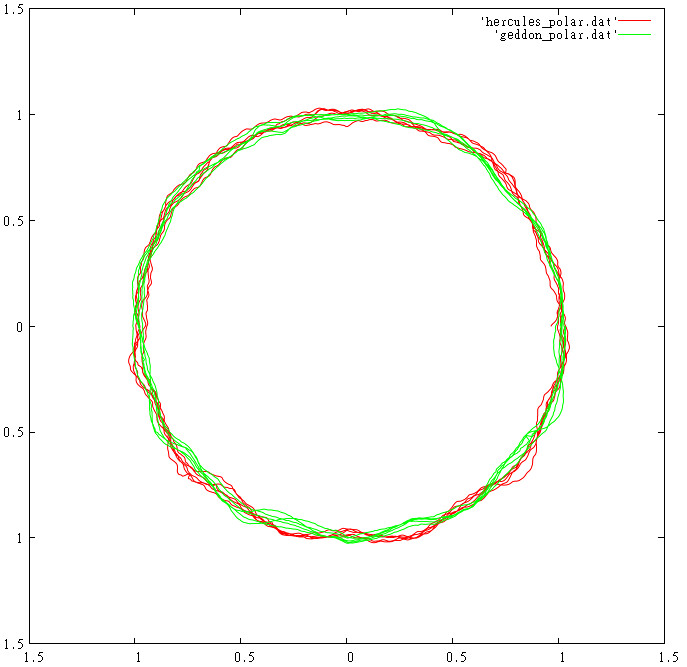
Here's the same deck with the same motor but with silicon bearing oil.
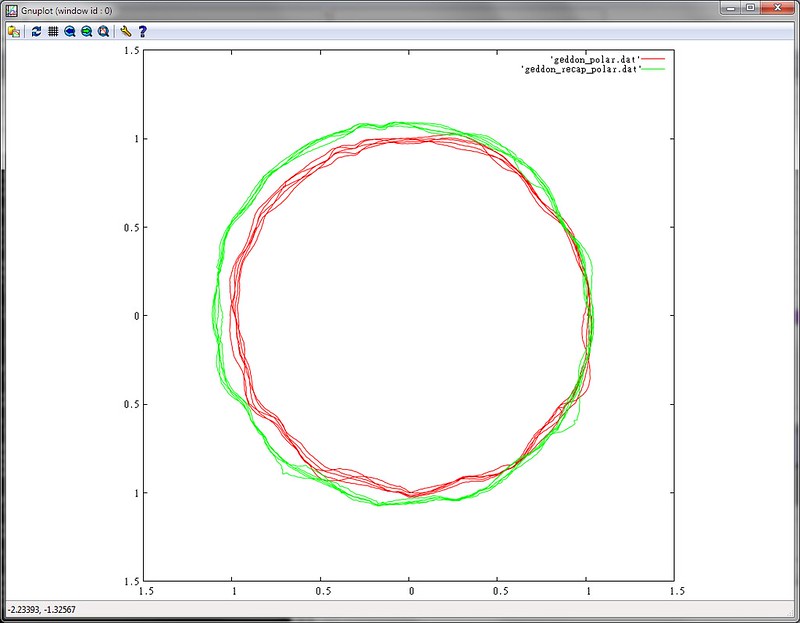
I can't find the graph for the Project 16v motor and current fancy PSU, but it's better again.
I run a Kuzma Stabi, where the arm mount and bearing mount are on the same massive 60mm thick brass cyclinder. The motor pod is remote. It works well is low noise, and is very lively sounding.
An externally hosted image should be here but it was not working when we last tested it.
Nigel by way of example here's the above deck using a standard LP12 motor with a Hercules and a Geddon power supply.

Here's the same deck with the same motor but with silicon bearing oil.

I can't find the graph for the Project 16v motor and current fancy PSU, but it's better again.
That's a very good method. I know Frank. A really nice guy and very modest about his work. His air bearing arm is interesting. The air is like a capacitor. As more presure is had the bass improves. More air micro farads.
As for the motor I can only see what I have shown before as a pathway. The 2 x 220 uF 250 V and isolation transformer nice and easy.
The spring is an echo chamber. The rubber stops that rather too well. It can be super tuned. I could imagine polyetherlene rubber as being better ( no idea if that is the real name for it, softer grades ) .
As for the motor I can only see what I have shown before as a pathway. The 2 x 220 uF 250 V and isolation transformer nice and easy.
The spring is an echo chamber. The rubber stops that rather too well. It can be super tuned. I could imagine polyetherlene rubber as being better ( no idea if that is the real name for it, softer grades ) .
The drag = improvement was something we had to get right with the Garrard 501. Some of the folklaw put about is simply wrong. Not subtlly wrong at that. One bearing we tried took a day to come to speed and lost it in 10 minutes if switched off. The surface finish is mostly about people looking at bearings, 1 micron is only because it is easy enough to do. One bearing we tried had furrows. It was excellent. It was even made from stainless steel which is totally unsuitable. Stainless can be high speed turned to glaze it. That makes it OK, if working stainless steel go slow until you want it hardened. The 501 has the last process as that on the chassis. RR of Darby helped. We were cheeky enough to phone them asking who was it who wanted £5 to slip it in the Rhodium tank at midnight. They were very helpful and said the Rhodium is only to get a finish and we should be proud of our machining. The advice given was basic machine cut bottom. Inner surface fine finishing cut. Outer edge hand polished. If you look back to the link I gave of the German review you will see that. The bottom is almost rough in contrast to the motor. It is beautiful rough. Garrard also had this. 1 is front, 2 is sides, 3 is under platter and 4 is deck bottom. 1 has to be the most perfect. Garrard and RR worked togther in the war. The 401 platter made on RR machinery ( Vickers Swindon, now Honda ). As far as I know Garrard were the only company ever to be in a joint advent with RR. RR would love a copy, it was a 301 and in USA. Bob and myself were in the engine room of his RX7 with a 301 perched on the whatever a rotary engine has other than the rocker cover and obviously happy. A German man asks ironically " What is this about ". Martina a friend said " This is called joy ". Bob's RX-7 was better than when if left the factory and >400 BHP. The photo was just an accident as it was engine inspection time and the 301 was in my hands. The engine had just grown cooling pipes I think. The engine didn't last long. I had advised this. As much as Bob wouldn't agree I would have fitted a Rover V8. It would have used much less fuel! A Rover will do 350 BHP and be OK. It won't do 410, the crankcase isn't strong enough. The pistons hit the head and on the centrifical side. Cosworth pistons are tough. After a remachine thery went back in.
Garrard and Porsche
The Garrard bearing is not like the LP12 or others. It can work for 50 years with only 55(C) Rockwells of harness, Linn I think is 64 like SME. What people get wrong is the bearing needs the largest possible clearance with a nice finish. This allows a better type of oil to be used. Even so SAE 30 is about the limit. Verdier used Rockol Lathe slide base oil ( red ). Motorcar oils seem unsuitable due to aditives. The synthetics more so. Garrard used hydrolic fluid as used in JCB's. I dare say ATF would be similar. The original Linn oil might have been for sewing machines as the Linn factory had made the industrial Singer machines. Jack Tiefenbrum on coming to Scotland found the sewing mahiines not able to do industrial work. He set about modifying them. Singer liked it and this in the end became Catlemilk Engineering.
Original Rega bearings used EP 90. A man said his deck was doing 31 RPM ( for me it was fine ). On phoning Rega they said it must be at about 10 C in the house. It was 5 C! It was an old tower block in Birmingham I think? Although the room was a bit warmer the place where the turntable sat was 5 C. On this evidence the guy got relocated. Some Rega's pully's come loose. Careful with the Superglue to avoid the phosphor broze bearing.
If a friend has a Lenco 75 I would love to see it do your circle test. What is the test set up ( test disc I assume )? I suspect if a Lenco's arm has OK knife blocks it would suilt Denon DL103/110, Goldring 1042. It's not very pretty as about the worst I can say about it. Mr old boss has a Lenco GL99 for me. That will be interesting. It isn't the best looking and much like a biscuit tin when the chassis ( Linn thickness I guess ).
Garrard and Porsche
The Garrard bearing is not like the LP12 or others. It can work for 50 years with only 55(C) Rockwells of harness, Linn I think is 64 like SME. What people get wrong is the bearing needs the largest possible clearance with a nice finish. This allows a better type of oil to be used. Even so SAE 30 is about the limit. Verdier used Rockol Lathe slide base oil ( red ). Motorcar oils seem unsuitable due to aditives. The synthetics more so. Garrard used hydrolic fluid as used in JCB's. I dare say ATF would be similar. The original Linn oil might have been for sewing machines as the Linn factory had made the industrial Singer machines. Jack Tiefenbrum on coming to Scotland found the sewing mahiines not able to do industrial work. He set about modifying them. Singer liked it and this in the end became Catlemilk Engineering.
Original Rega bearings used EP 90. A man said his deck was doing 31 RPM ( for me it was fine ). On phoning Rega they said it must be at about 10 C in the house. It was 5 C! It was an old tower block in Birmingham I think? Although the room was a bit warmer the place where the turntable sat was 5 C. On this evidence the guy got relocated. Some Rega's pully's come loose. Careful with the Superglue to avoid the phosphor broze bearing.
If a friend has a Lenco 75 I would love to see it do your circle test. What is the test set up ( test disc I assume )? I suspect if a Lenco's arm has OK knife blocks it would suilt Denon DL103/110, Goldring 1042. It's not very pretty as about the worst I can say about it. Mr old boss has a Lenco GL99 for me. That will be interesting. It isn't the best looking and much like a biscuit tin when the chassis ( Linn thickness I guess ).
Nigel, send me his address and I'll post him my pressing of the test record to use. All the other tests used my copy of the record to ensure comparable results due to eccentricity etc. he just needs to record the first 30 seconds in 16bit/ 44.1 and email me the WAV file and I'll forward it on to PaulR.
I had the Goldring G99 a few years back, nice motor and bearing, bloody awful chassis though.
I had the Goldring G99 a few years back, nice motor and bearing, bloody awful chassis though.
Thanks. If I get the GL99 working I should do that.
Biscuit tin is about right. What bothers me about GL75 is it took 50 years for people to say how good it is. A lady asked me to install a hi fi for about £1000 in a very posh apartment in Park Town Oxford. I jumped at the chance to see inside the building. Sort of thing the series Lewis will uses as a back drop. She did it on the understanding I fixed up the Lenco. She was embarrased to ask. That's the day I woke up to how good they are. She had known the real Von Trapp familly. The Sound of Music had ruined their lives it seems. She had worked in steam ships all her adult life and collected records. This was the first time they had been played.
At Loricraft Audio a GL75 was dropped off for the boss of a valve company. We used GL75 at the time as part of record cleaning machines as did Audio and Design Ltd in 1968. Unfortunately no one told Guy our chap who did this. As Terry said the Lenco 75 went to Guys slaughter house and was no more. I pieced together the plinth and gradually built up a replacement, the original plinth somehow was OK. This was fitted with a Goldring 1042. It was very very good.
Biscuit tin is about right. What bothers me about GL75 is it took 50 years for people to say how good it is. A lady asked me to install a hi fi for about £1000 in a very posh apartment in Park Town Oxford. I jumped at the chance to see inside the building. Sort of thing the series Lewis will uses as a back drop. She did it on the understanding I fixed up the Lenco. She was embarrased to ask. That's the day I woke up to how good they are. She had known the real Von Trapp familly. The Sound of Music had ruined their lives it seems. She had worked in steam ships all her adult life and collected records. This was the first time they had been played.
At Loricraft Audio a GL75 was dropped off for the boss of a valve company. We used GL75 at the time as part of record cleaning machines as did Audio and Design Ltd in 1968. Unfortunately no one told Guy our chap who did this. As Terry said the Lenco 75 went to Guys slaughter house and was no more. I pieced together the plinth and gradually built up a replacement, the original plinth somehow was OK. This was fitted with a Goldring 1042. It was very very good.
Old thread I know, just wondering if anyone has the dimensions of the LP12 armboard, I want to fit a Hadcock GH228 to an LP12 that I am building up slowly, but the geometry of existing armboards are wrong and blanks are silly money for what they are.
Hi Batty, I no longer seem to have a dwg of a Linn LP12 armboard but the dimensions of the Graham LP12 armboard that was supplied when I mounted a G2.2 on my LP12 are: 299 x 101 x 8.5mm.
Andy
this seems to be an interesting approach (converting to a 3-pulley belt drive system):
https://www.ebay.at/itm/295210392456?hash=item44bbe91b88:g:9OUAAOSwj2JjCEsH
obviously from the owner of this company:
https://www.enjoythemusic.com/superioraudio/equipment/0808/funk_vector_link.htm
https://web.archive.org/web/20080216232158/http://www.thefunkfirm.co.uk/V_Link.htm
https://www.ebay.at/itm/295210392456?hash=item44bbe91b88:g:9OUAAOSwj2JjCEsH
obviously from the owner of this company:
https://www.enjoythemusic.com/superioraudio/equipment/0808/funk_vector_link.htm
https://web.archive.org/web/20080216232158/http://www.thefunkfirm.co.uk/V_Link.htm
Attachments
-
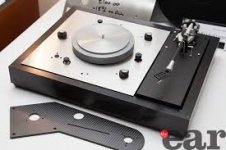 images.jpg9.5 KB · Views: 92
images.jpg9.5 KB · Views: 92 -
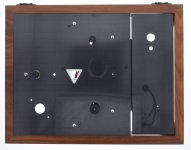 s-l1600.jpg208.4 KB · Views: 91
s-l1600.jpg208.4 KB · Views: 91 -
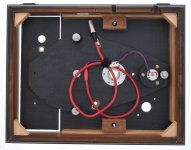 Linn LP12 three-pulley-belt drive-IV.jpg237.2 KB · Views: 118
Linn LP12 three-pulley-belt drive-IV.jpg237.2 KB · Views: 118 -
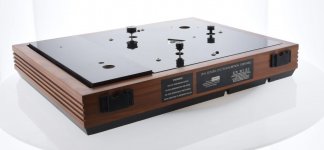 Linn LP12 three-pulley-belt driveV..jpg78.9 KB · Views: 116
Linn LP12 three-pulley-belt driveV..jpg78.9 KB · Views: 116 -
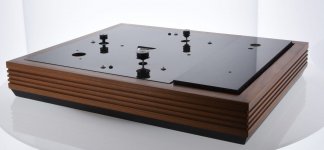 Linn LP12 three-pulley-belt driveII.jpg85.5 KB · Views: 100
Linn LP12 three-pulley-belt driveII.jpg85.5 KB · Views: 100 -
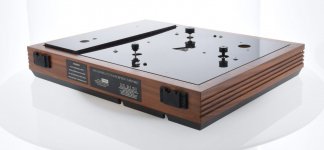 Linn LP12 three-pulley-belt drive.jpg78 KB · Views: 103
Linn LP12 three-pulley-belt drive.jpg78 KB · Views: 103
- Home
- Source & Line
- Analogue Source
- Linn Sondek DIY mods that work
